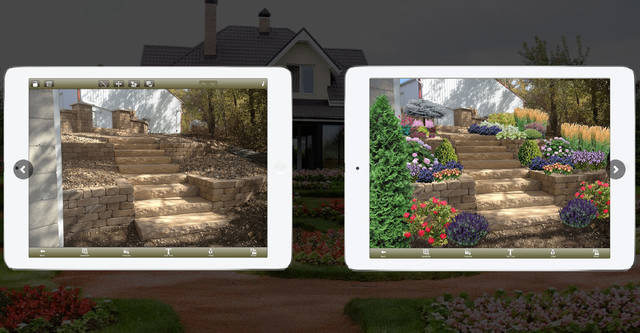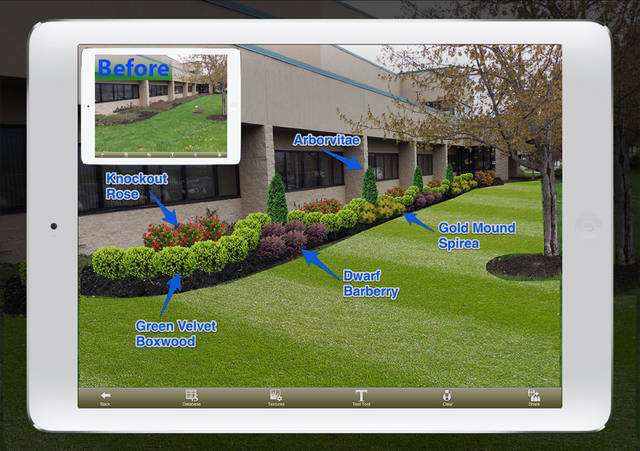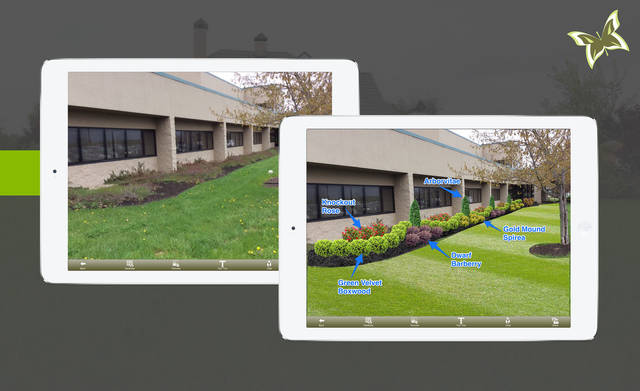Just as virtual technology has become a common tool for anyone planning to repaint or redecorate a home, a growing array of apps can make landscaping easier too. ADVERTISING Just as virtual technology has become a common tool for anyone
Just as virtual technology has become a common tool for anyone planning to repaint or redecorate a home, a growing array of apps can make landscaping easier too.
But know when to use them, and when it would be easier to pull out an old-fashioned pencil and a sheet of graph paper — or to seek out a professional.
“We’ve seen an increase in virtual interior design services within the last two years, so it’s only natural that this functionality would make its way to the exterior of the home as well,” said Stephanie Sisco, Real Simple magazine’s home editor.
A few of the more popular DIY gardening apps include Garden Designer ($9.99, from Artifact Interactive), Design your New Surroundings ($9.99, from Home Revivals), Garden Plan Pro ($9.99, from Growing Interactive), and Perennial Match ($4.99, from Harmony systems, Inc.).
“We have seen several hundred thousand downloads,” says Patrick Pozzuto, founder of the iScape app ($9.99, from Home Revivals LLC), aimed at both professional and home landscapers. Based in Mount Pleasant, South Carolina, Pozzuto worked as a contractor before launching his app.
“Arranging plants using a touch screen is way easier than using your lower back to do it,” he says.
“But while the pros have been using apps for a long time now, home gardeners do encounter some hiccups sometimes,” he admits. “They don’t necessarily know what plant goes with what, and what areas it’ll grow in. And some people don’t have an artistic mind, and get into trouble.”
Dave Whitinger, executive director of the National Gardening Association, based in Jacksonville, Texas, warns that while some tech-savvy gardeners quickly get the hang of landscaping apps, the learning curve is steep, and they may be impractical for most home gardeners. The association, founded in 1971, helps put out the “Gardening for Dummies” book series (published by For Dummies) and hosts the website garden.org.
“The reality is that while the virtual tools are great for a minority of gardeners, many more people find them far too confusing, and they get really frustrated,” he says.
Many home gardeners, he says, would be better off using a pencil and graph paper, with each square representing 6 inches, or whatever scale is appropriate for the particular garden.
Yet even for amateurs, he notes, the information on some online sites can mean the difference between failure and success with gardening and landscaping projects. Garden.org, for example, features a database for the entire country, searchable by zip code, to tell home gardeners what the frost dates are for their area, when to plant which vegetables and flowers, and what kinds of plants will encourage, say, certain varieties of butterflies or bees.
“Knowledge like that is crucial to whether a person’s gardening project succeeds,” he says. “Lettuce and spinach and tomatoes all have different dates when they should be planted for best results, and planting dates vary depending on where you live. Just because you see the plants for sale in the nursery doesn’t mean it’s the right time to plant.”
And even if you haven’t figured out all the features of the gardening apps, they can be a good way to show professional landscapers what you have in mind, Pozzuto says,
Richard Heller of Greener By Design, a firm in the New York area that uses 3-D software to help with both landscape design and communication with clients, says the software makes a huge difference.
“Three-D software is still not very common, and it gives us an amazing competitive edge. It allows people to see what’s not planted, so they start expanding on projects they have in mind,” he says.
“The software is accessible to anyone, but there’s a steep learning curve involved. And you need a high-end gaming computer to use it.”
Heller says home gardeners might want to check his company’s website EZgardendesign.com which, for a small fee, allows you to create a landscaping “design book.” It’s a good starting point, but most home gardeners would still want to work with a professional who knows plants well, he says.
And there’s always graph paper and a pencil if the learning curve proves too steep.








